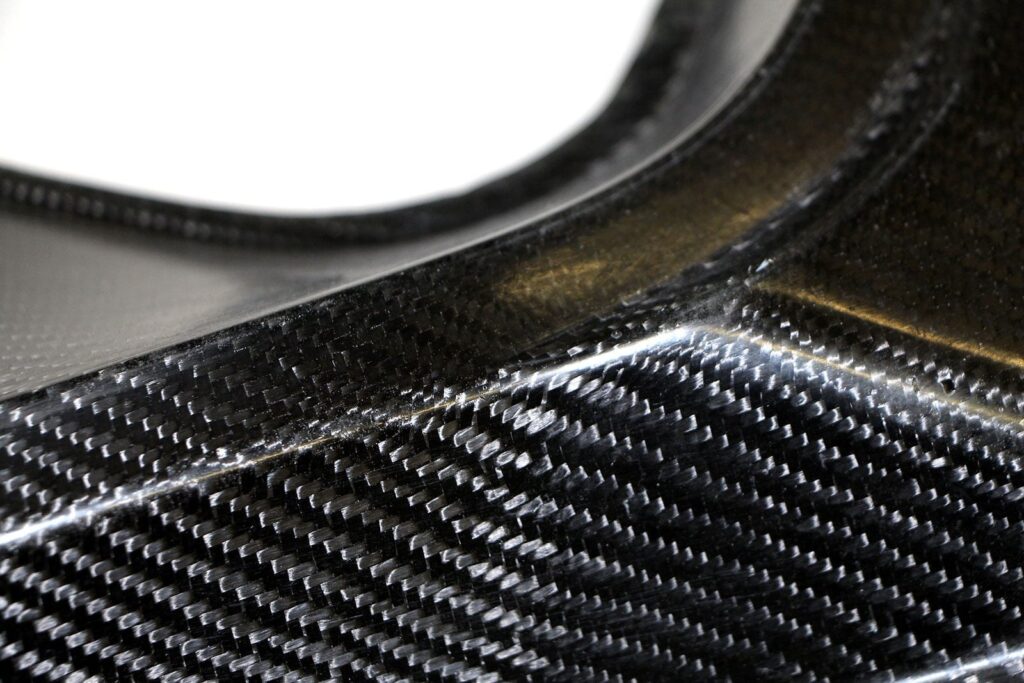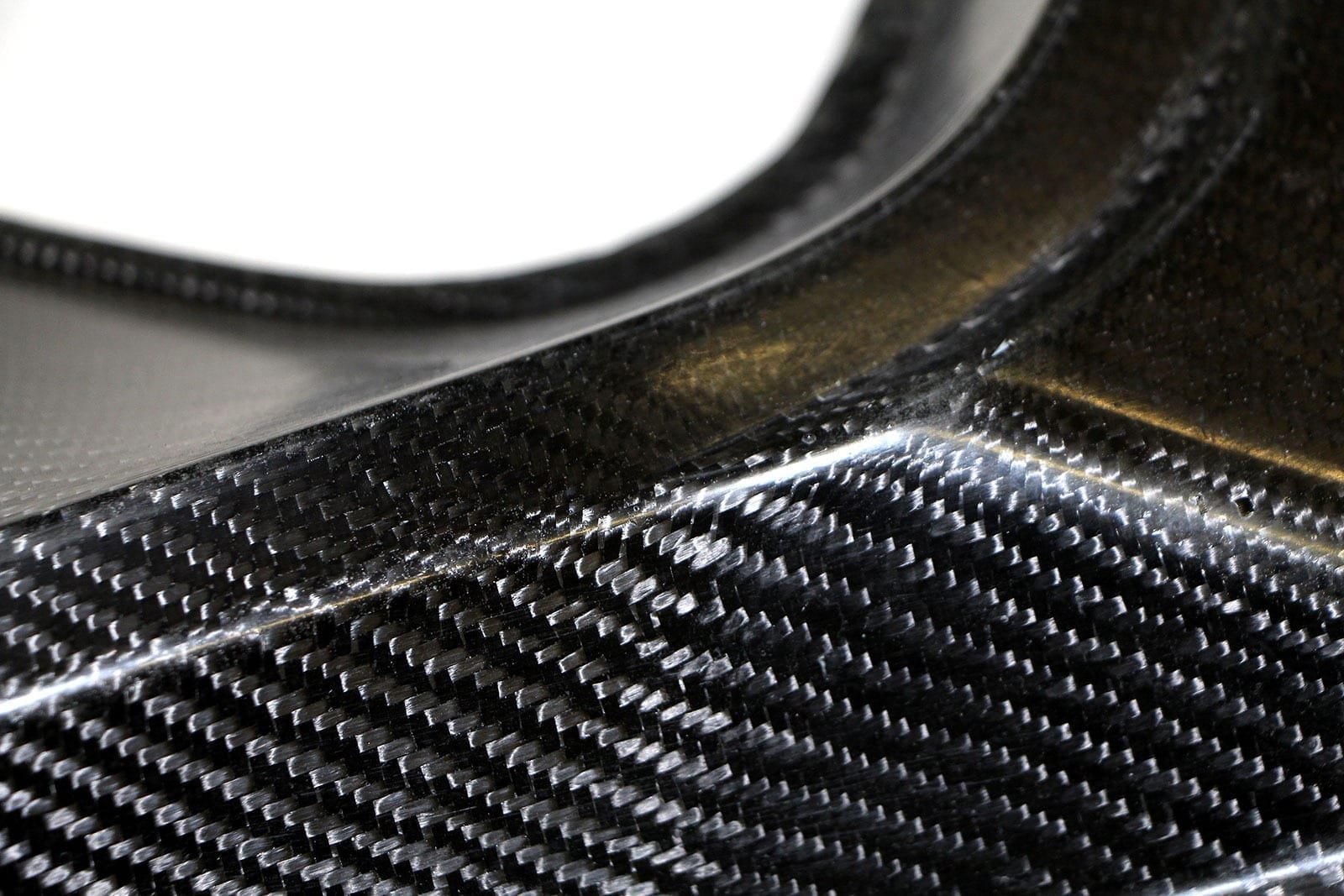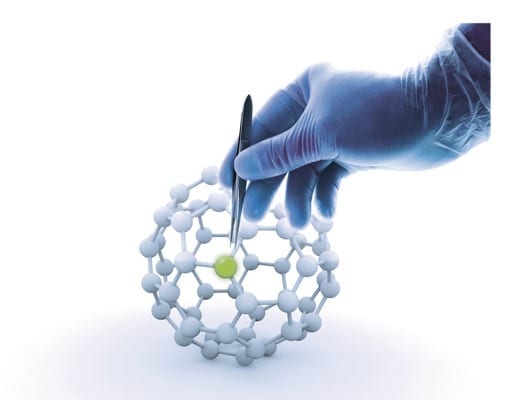
Carbon and glass fibers reinforce synthetics so that they can be used for vehicle body construction. But in this regard, there is an abundance of potential found in natural fibers – obtained from hemp, cotton, or wood. If you combined bio-based textile and carbon fibers, you can obtain extremely light yet very sturdy components.
“Lightweight” is an important buzzword in automotive engineering, and just as important in the aerospace sector, too. Carmakers are increasingly counting on fiber reinforced synthetics. These fibers, which are embedded into the synthetic matrix, give the material its additional durability. Exactly which material you choose to use depends on its eventual application. Thus, primarily carbon fiber is used in Formula 1 racing. However, one drawback is its high price; even its processing can be tough. These are the reasons why carbon fiber-reinforced plastics (CFRPs) have still not yet found their path into wide-scale serial production so far to date. Glass fibers, on the other hand, are certainly reasonably priced, but heavy by comparison. But this may soon change, thanks to some new research approaches by researchers at the Application Center for Wood Fiber Research HOFZET of the Fraunhofer Institute for Wood Research, the Wilhelm-Klauditz-Institut WKI in Braunschweig.
Combining advantages, eliminating disadvantages
The scientists are relying on natural fibers of botanical origin. Variants derived from hemp, flax, cotton and wood are about as affordable as glass fibers, and moreover have a lower density than the pendants made of glass or carbon. Another advantage: If you incinerate them at the end of their life cycle, they produce additional energy – without leaving residues. Nevertheless, their durability and stability don´t reach that of carbon fibers. ”Depending on the application, we are therefore combining carbon with various bio-based textile fibers,” explains Prof. Dr.-Ing. Hans-Josef Endres, head of the Application Center for Wood Fiber Research. The fibers typically exist as fabrics that are placed on each other accordingly and are embedded by the plastic matrix. “We use carbon fibers in those areas where the part undergoes intense mechanical stress; in other areas, it’s natural fibers. This way, we can leverage the strengths of the respective fibers and get rid of the disadvantages to a great extent. ”The outcome: the parts are cost-effective, have a very high degree of durability, possess excellent acoustic properties and are substantially more ecological than pure carbon components.
Read more: Vehicle body made from cotton, hemp, and wood
The Latest on: Bio-based textile fibers
[google_news title=”” keyword=”Bio-based textile fibers” num_posts=”10″ blurb_length=”0″ show_thumb=”left”]
via Google News
The Latest on: Bio-based textile fibers
- Hyosung's Integrated Facility Boosts Supply Chain Resilience for Bio-Based Spandexon April 26, 2024 at 6:16 am
These are some of the reasons behind the new vertically integrated, bio-based fiber manufacturing plant in Vietnam from Hyosung-the Seoul, Korea-based textile solutions provider and world's largest ...
- The Most Exciting Advancements in Fabric Innovation Right Nowon April 25, 2024 at 6:31 am
The latest alternatives to plastic and leather come from some surprising places, but they need to scale in order to truly make a difference in the industry's environmental impact.
- Denim Mills Lean On Circular Fibers for Fall/Winter 25-26on April 22, 2024 at 9:00 am
Fibers are the backbone of denim mills’ innovations. For Fall/Winter 2025-2026 that means circularity, performance and freedom of movement. Crescent Bahuman Limited (CBL) is shifting gears. “Amid the ...
- Our Favorite Sustainable Brands to Add to Your Wardrobeon April 22, 2024 at 8:59 am
E.L.V. Denim is a great name to know when it comes to shopping for a sustainable wardrobe. The luxury label—which is based in its East London studio, and was founded in 2018—specializes in ...
- A complete guide to fashionable and durable sustainable leather alternativeson April 22, 2024 at 7:37 am
We asked experts about the best sustainable leather alternatives, the environmental impact of vegan leather in fashion and how to avoid greenwashing your closet.
- Exciting Prospects For Compositeson April 21, 2024 at 8:32 am
Schlenker: Flax fibers are already being processed in the composites sector. What fascinates you about hemp? Are there any concrete figures on the benefits of this natural fiber in terms of ...
- Bio-Based Insulation Textiles Instead Of Synthetic Insulation Materials Are Set To Revolutionize The Construction Worldon April 20, 2024 at 9:29 am
The bio-based recyclable insulation textiles consist of 100 percent bio-based aerogel-fibres. They contain up to 90 percent air, trapped in the nano-pore system of the aerogel-fibres. The bio-based ...
- DITF and VRETENA win Cellulose Fiber Innovation of the Year 2024 Awardon April 19, 2024 at 11:15 am
Nova-Institut GmbH announced that DITF and VRETENA’s Straw Flexi-Dress has won the Cellulose Fiber Innovation of the Year 2024 Award.
- Vietnam Bio-based Leather Market 2024 Industry Scenario, Strategies, Growth Factors and Forecast to 2032on April 17, 2024 at 9:22 pm
The recent analysis by Report Ocean on the “Vietnam Bio-based Leather Market” Report 2024 to 2032 revolves around various aspects of the market, including characteristics, size and growth, ...
- Monoethylene Glycol Market To Reach USD 37.8 Billion By 2032, Says DataHorizzon Researchon April 16, 2024 at 5:30 am
The increasing emphasis on environmental sustainability has opened up growth opportunities for prominent players in the monoethylene glycol (MEG) market b ...
via Bing News




